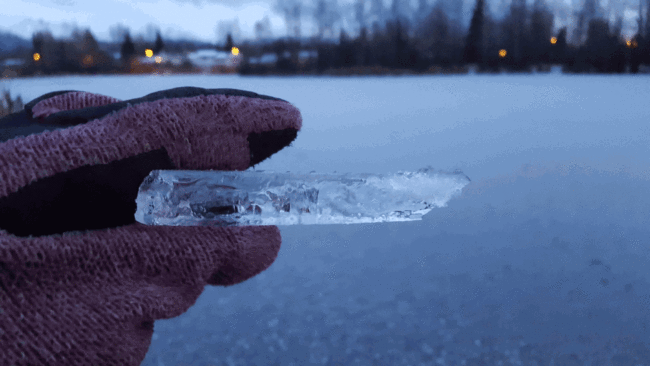
This time of year, ice skating enthusiasts start dreaming about getting out for a spin on Alaska lakes.
But even in the same area, lakes can freeze at different times. That prompted nine-year-old Liam Cleary from Anchorage to ask: Why do some lakes freeze faster than others?
Brian Brettschneider, with our Ask a Climatologist segment, is an avid skater and has thought a lot about this question. He says several factors determine when lakes freeze.
Interview Transcript:
Brian: The big thing is the amount of water in the lake. How deep is the lake, because the lake is accumulating warmth the entire summer long. So by the time we hit the first of September, the lake temperature is around 52 degrees and as the air cools down, all that warmth that’s accumulated has to be released. And if you’ve got a lake that’s 20 feet deep versus a lake that’s 10 feet deep, it’s got twice as much water in it. So it’s just going to take a lot longer for that heat to be released.
Annie: Are there other factors?
Brian: There are. For example, the exposure. If the lake is completely encircled by trees, our low sun angle will mean the sun isn’t going to hit it at all, so if a little bit of ice forms at night, that ice is going to survive during the daytime, versus one that has full sun exposure, it’s going to melt a little bit during the day. The other key thing is whether or not there’s any new water coming into the lake. So some lakes are kind of a bowl depression, other lakes have a stream coming in on one side and a stream going out on the other. Streams are carrying cooler water. They’re not accumulating heat, they’re always moving. So if you’re bringing in water from a stream, that’s actually keeping that lake water a little cooler, so it’s going to freeze a little faster in the fall.
Annie: How do lakes freeze, do they freeze from the top down, or from the bottom up?
Brian: Most of us can visualize a cup of ice water, and the ice is at the top, so ice is less dense. During the summer, as you go down the lake, it gets cooler. But in the fall, once you hit about 38 degrees, the density flips in a lake and it actually gets warmer as you go down. Once it does, you can get a rapid freeze-over, even with not as cold temperatures.
Annie: You’ve done measurements on your neighborhood lake over the last how many years?
Brian: Over the last four years, about every five to seven days, I’ll go out there with a little drill and I’ll drill a hole and stick a tape measure in it. You can see the progression of how the temperatures and the amount of snow cover influence the amount of cold that goes into the lakes.
Annie: Have you learned anything?
Brian: Yes. I originally expected that the deeper parts of the lake would freeze earlier and the shallower parts would freeze sooner, but there is this circulation even in an enclosed bowl due to the density, where the water kind of mixes together. So actually when it does freeze up, it kind of all flash freezes over at once.
Annie Feidt is the broadcast managing editor at Alaska Public Media. Reach her atafeidt@alaskapublic.org. Read more about Anniehere.





